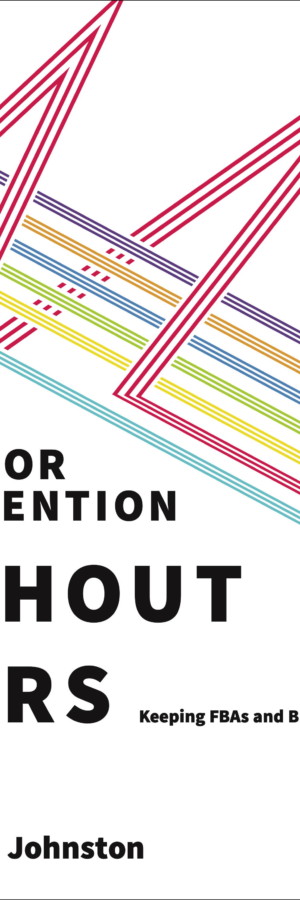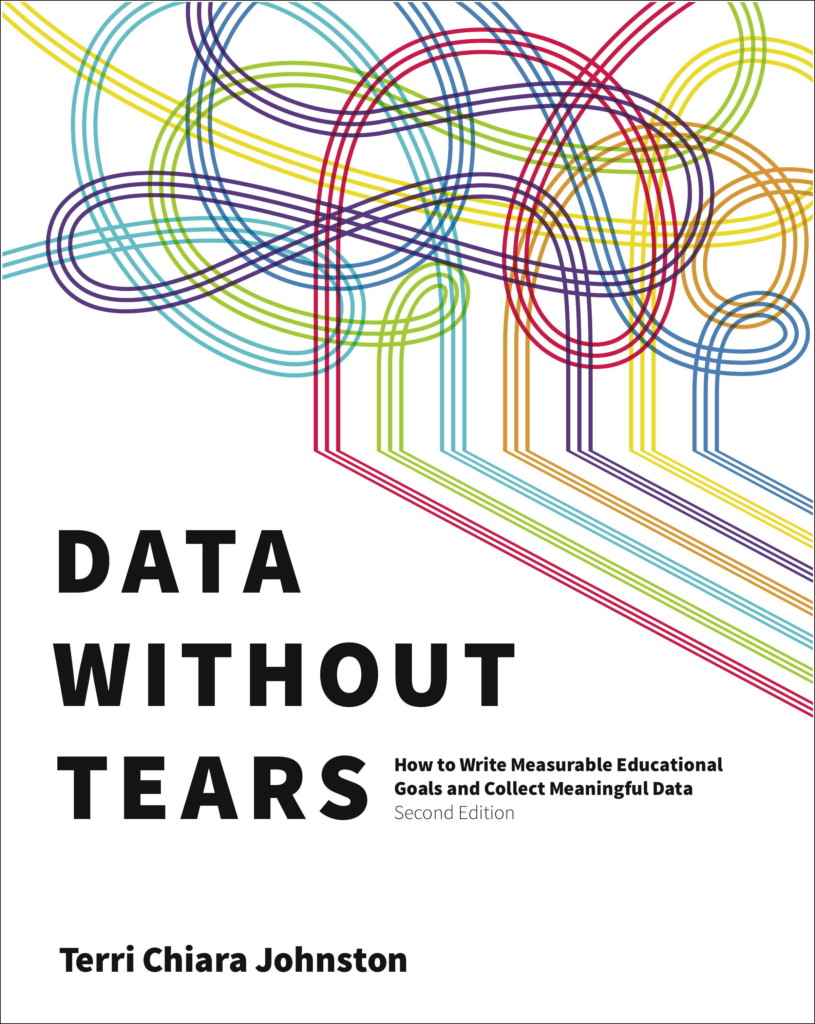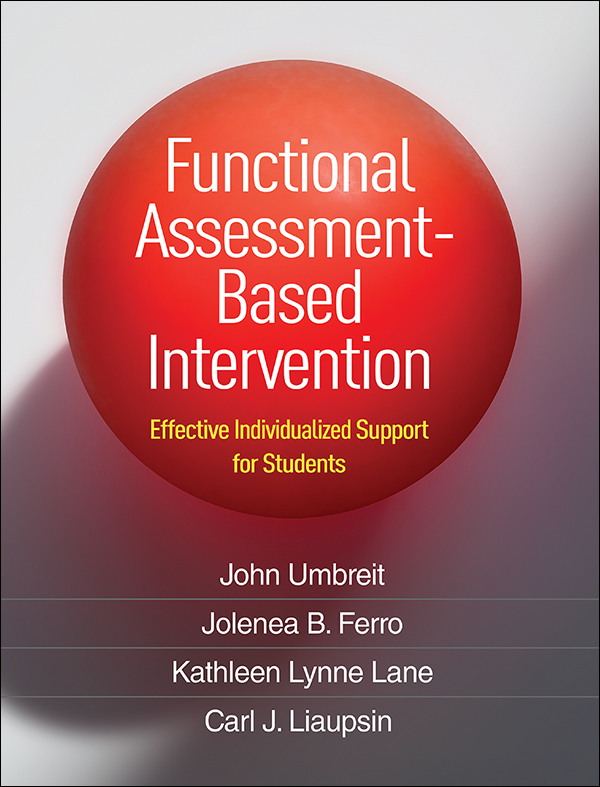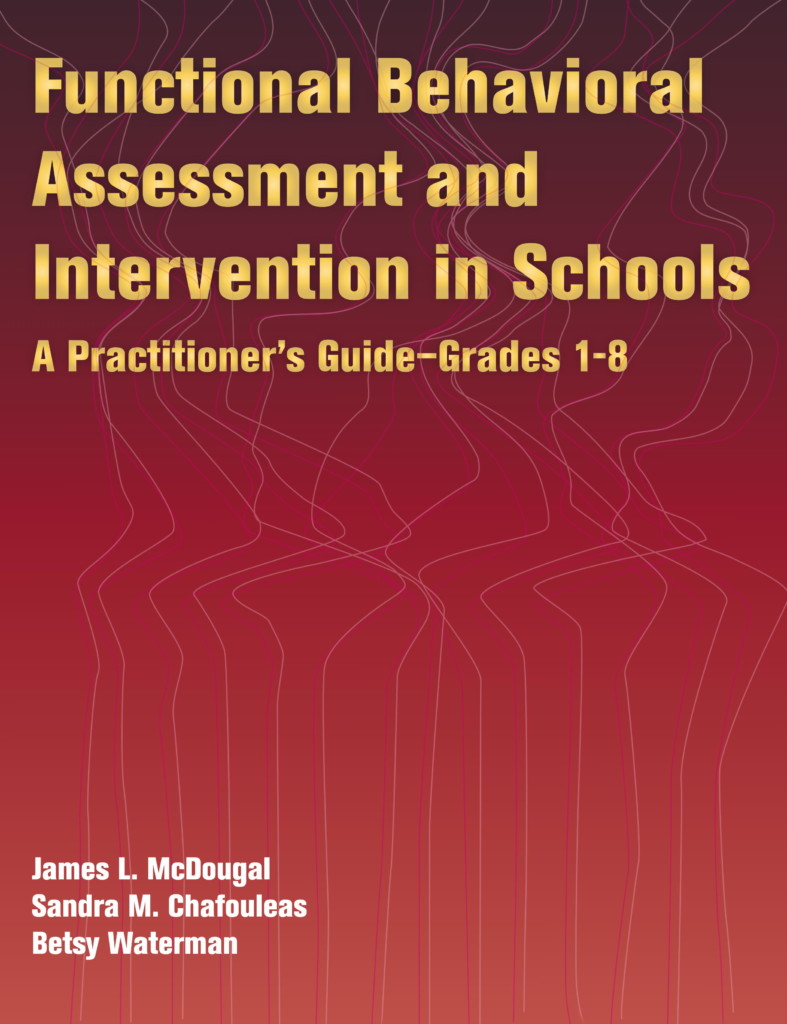This book tackles basic issues involved in constructing sound functional behavioral assessments (FBAs) and behavior intervention plans (BIPs).
Written in the author’s trademark conversational style, contents pinpoint ways to teach new skills and alternative behaviors to address behavioral challenges.
Teachers, counselors, and others will learn how to:
- Use the simple A-B-Cs of learning to prevent, not react to, behavior problems.
- Understand the basic components of an FBA and choose and describe target behaviors so everyone involved can chart them.
- See how knowledge of a youngster’s escalation and de-escalation cycles determines the success of behavioral interventions.
- Integrate simple data collection methods in the FBA/BIP process and write crystal-clear hypothesis statements.
- Identify antecedents and consequences of behavior and manage the context in which behavior problems occur.
- Teach new behavior by controlling the environment and reinforcing youngsters strategically
- Intervene effectively to get rapid reduction of problem behaviors.
The perfect companion to the second edition of the author’s bestselling Research Press book Data Without Tears: How to Write Measurable Educational Goals and Collect Meaningful Data.
Terri Chiara Johnston, author of the second edition of Data Without Tears: How to Write Measurable Educational Goals and Collect Meaningful Data, discusses why she revised her widely read bestseller and why she wrote her newest book, Behavior Intervention Without Tears: Keeping FBAs and BIPs Simple.
Known for her conversational writing style and her insistence that working with data and creating intervention plans be kept simple, Johnston responds here to questions asked by Gaye Dunn, middle school counselor in East Moline, Illinois.
Why are your materials the easiest to use of similar materials available?
I have tried to keep my material short and to the point. The original concept of Data Without Tears was to make it a general reference book that teachers could keep on their desks, handy when trying to write measurable goals and objectives. By giving an easy formula—A = Audience, B = Behavior, C = Condition, and D = Degree—users can check what they have written against the simple acronym and always be successful.
What would you add to your work now, and how do you wish it were delivered?
Actually, when I took on the second edition challenge, I really thought that I’d add quite a bit. However, once I read the manuscript over several times, the additions complicated the message. The things I would like people to know more about really were case-specific advice: what would you write when staff were not able to follow through properly or what to do when you found the student’s goals didn’t match his or her need by the time you started instruction. So I really like how the second edition came out. I feel it’s even a little simpler, in fact. When paired with my new book, Behavior Intervention Without Tears, I think it works quite well for print media.
After writing the second edition of Data Without Tears, what’s next?
My very latest book is Behavior Intervention Without Tears, which focuses on using data to design effective and efficient behavior change. This has been my career-long focus. It took writing Data Without Tears to lay the best foundation for writing a book that explains functional assessment in its simplest form and then what you do with the assessment data to make a positive difference in the lives of kids who are the most challenging, and often the most rewarding, to their teachers.
Why write about behavior intervention plans when others have covered that topic?
The real reason there are so many resources out there is that regardless of any expert’s advice, the process remains overwhelming and undoable in many school settings. Don’t get me wrong—I passionately believe in the model. It’s good for kids, and it’s good for teachers. Unfortunately, we aren’t trained early in our careers to think about behavior. It is almost an afterthought in most university curriculums, even special education courses. The idea of function and purpose should be a constant theme through content courses, statistical courses, and method courses so that it becomes second nature to apply the principles in every situation.
When I say my ultimate goal is to teach people to think about behavior differently, I really mean that. That’s what I’ve tried to accomplish with the first two books.
What do you want to do next in your profession?
First, I am considering offering material in a digital format, not merely print form. I’d want to talk to folks directly and provide consultation on real cases. When you’ve lived and worked in this business as long as I have, you find there are several recurring issues that, yes, may have some unique variables, but they are relatively common situations regardless of what teachers and administrators might think. This might be the best way to provide follow up for these two manuscripts.
Second, I have, over the years, collected a great deal of information regarding classroom set-ups for groups of students who are significantly emotionally and behaviorally disturbed. Writing a manuscript focusing on necessary program components for these students would something I could be talked into.
Related Links
Learn more about Terri Chiara Johnston’s two books, available from Research Press:







